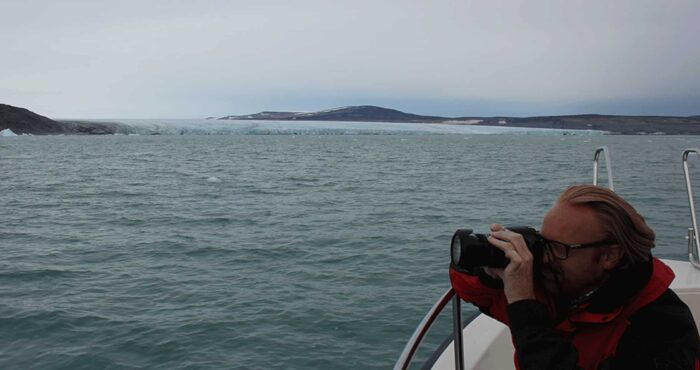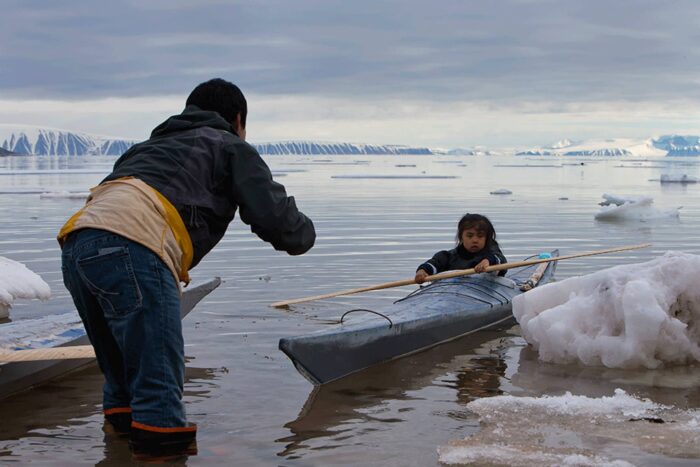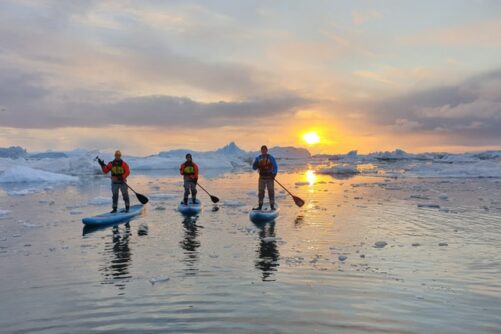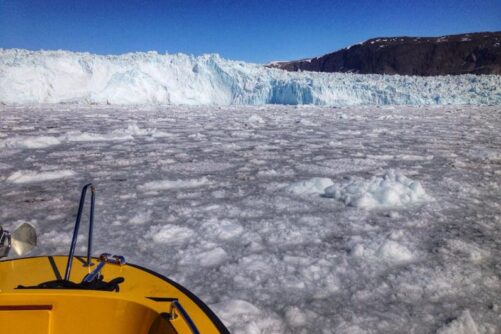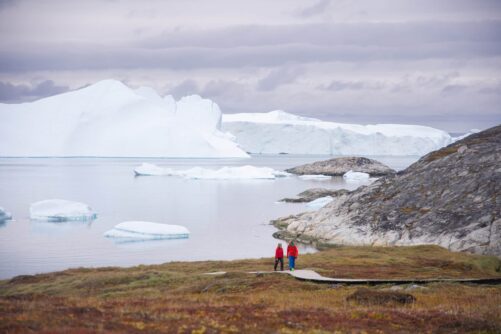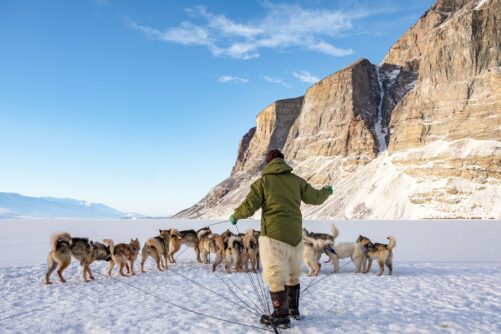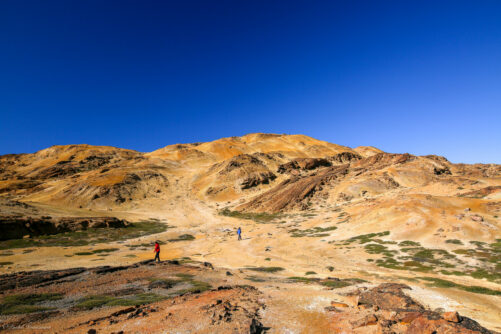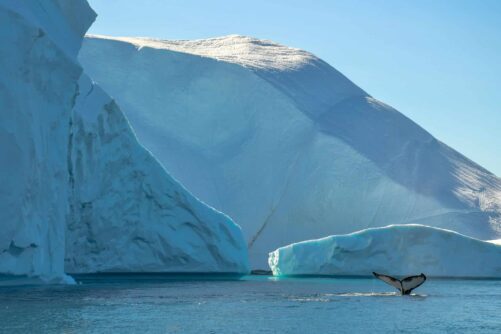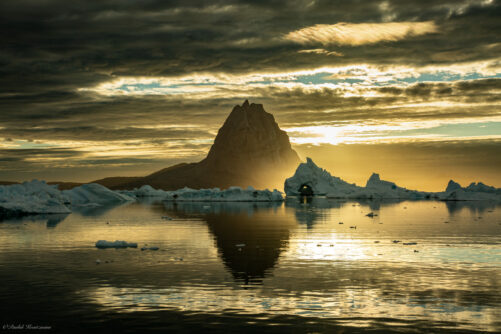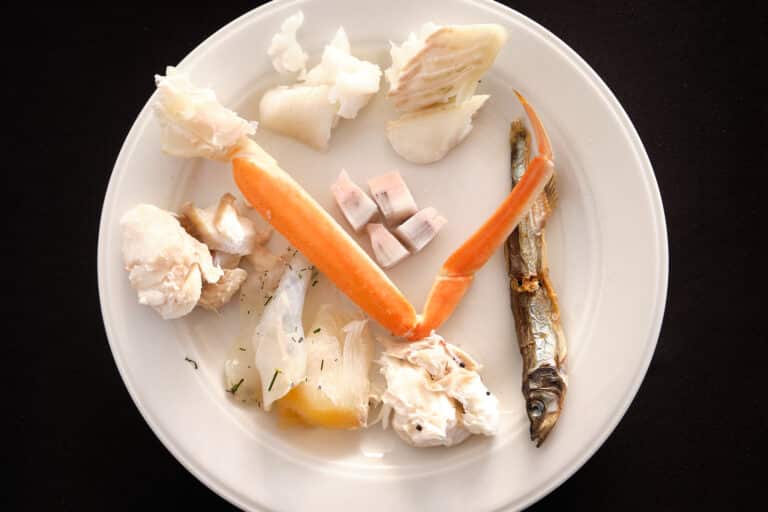

Boat trip to the Pituffik Glacier
Published: 23/06/2021
Reading time: 7 minutes
Pituffik Glacier is one of Greenland’s many magnificent glaciers. It is situated in the Thule region at latitude 76 degrees north, only about 30 kilometres from Thule Air Base and just over 1,200 kilometres north of the Arctic Circle
A boat in Thule Air Base
On this beautiful August evening, a small, privileged group of us are sailing from Thule Air Base towards the glacier. I feel fortunate because very few people get this opportunity. Only a few of those who work on the base get to go sailing because it means you have to have a boat or you have to know someone who does.
A boat is probably not the first thing that crosses your mind when you are employed on a temporary contract in a place where the sailing season lasts just a few months. It is different for the resident hunters in the surrounding villages who need their boats for hunting. Not many tourists drop by either. Only a few cruise companies end the summer season by sailing so far to the north of Greenland.
Rich wildlife
The water is calm, almost dead calm, when we round the headland at Thule Air Base. There is a view of flat-topped Mt. Dundas on the right and Saunders Island right ahead. Flocks of guillemots and black guillemots sweep all around the boat close to the surface of the water. They breed in millions in the summer in what the biologists call North Water or the Arctic Ocean. Here, there is plenty for them to feed on. The minerals released from the melting ice attract both krill and plankton which are eaten by the smaller fish, the primary food of the guillemots.
On the way, a seal sticks its head up as if to check that tourists are really here. It is not shy and takes its time to study us before it swims on.
The Green Valley of North Greenland
On the approach to Pituffik Glacier, you pass Kangilinnguit, which is appropriately called Green Valley in English. Even from the water, it is clear to see how green it is on land and down towards the beach about 40 musk-oxen and their calves are grazing.
In their eagerness to get to the greenest grass, a couple of them have climbed up the steep rocks. It is easy to understand that musk-oxen are related more closely to goats than cattle when you see their ability to climb.
Musk-oxen in North Greenland
In spite of the harsh winters in this region, with extremely high winds and frost down to minus 40 degrees, the musk-ox population in the region has been growing for many years, according to the Greenland Institute of Natural Resources. An increase in the frequency of polar bears has also been observed in the area, possibly as a result of the cooperation between the Arctic countries which includes limitations on hunting.
Impressive ice
Although the glacier calves many icebergs, it is far from being one of the most productive glaciers, partly because of the short season with open water at these latitudes. The amount of icebergs, growlers and brash ice increases as the boat gets closer to the huge face of the Pituffik Glacier. The captain slows down to avoid the growlers and it is not possible to sail very close to the glacier for safety reasons, so he keeps the boat at a few hundred meters’ distance while the guests busy themselves with their cameras on the ship’s aft deck.
The ice face stretches many hundreds of metres up from the surface of the water and behind it tons of ice push forward to come out and break away as newly-calved icebergs. It is an enthralling sight – a one-kilometre-long vertical wall of ice with fissures that give the wall of ice structure and enable us to discern individual vertical cracks from the rest, which is otherwise white on white.
As I landed a few days ago, I saw the glacier from the air. Here, it was clear to see how the ice cap almost flows out towards the glacier and makes several folds in large curves as it fills with more and more cracks and crevices, approaching the face where the ice breaks off.
The extreme cold glacier
I stand on the aft deck with the others. Although the glacier face is several hundred metres away, you can clearly feel the extreme cold which is like an invisible force that flows towards us from the glacier. Regardless of attire, it soon feels very cold.
On the way back, the captain sails as close to the icebergs as possible, but still at a safe distance. Just as everyone has focused their cameras on yet another colossal iceberg, large pieces start to break off and the iceberg tips and tilts several degrees before it gains its balance again. This is why you must keep your distance and although it comes as no surprise that the iceberg tilts, it is surprising that we are able to witness it at such close quarters.
For the rest of the trip I am on the look-out for whales and seals, but apart from the birds, there are no more animals that evening. Nevertheless, I am sated after yet another magnificent experience in the nature of North Greenland and exceedingly thankful to have had an opportunity to visit one of Greenland’s least visited glaciers.
Thule on the brink
Professor and anthropologist Kirsten Hastrup, who works at the Institute for Anthropology at Copenhagen University, has written a very big book that in words and pictures provides a portrait of the Thule region and the people who live there.
For eight years, she has paid regular visits to Thule and her conversations with the inhabitants together with historical accounts are the cornerstones of the book. In addition to this, the book contains unique pictures that tell a story by themselves. They were all taken by Carsten Egevang, scientist and award-winning photographer.
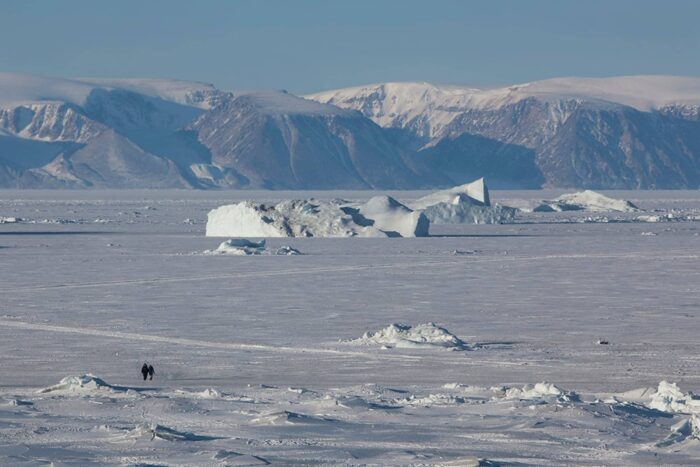
New times in Thule
The title of the book refers to the massive changes Thule is experiencing. The ice is melting and the permafrost is thawing; plant and animal life is changing and with this, society is changing. The hunters are finding it increasingly difficult to reach the large marine mammals that have been their livelihood for more than four thousand years and the animals are behaving differently.
There are not many alternatives to hunting in the High Arctic. The changes affecting nature are considered to be a significant threat to the hunters’ way of life.
Narrative about Thule
The book is divided into eight chapters; the Thule region, the people, the ice, the hunting, the technology, the colony, the invasion and the time. There is also a foreword, a prologue and an epilogue as well as maps, notes and a good list of contents that makes it easy to look up things.
The many human-interest stories carry the reader through the book and they are interspersed with excerpts from the historical accounts of Knud Rasmussen, Nansen and Peary, to mention just a few.
Solid work
This is not a book you read before bedtime, if only because of the weight of the 496 pages and the hardcover. You have to go to the bookstore to carry it home, but it is well worth the effort. It is not a dry book of facts, although it is very educational. Kirsten Hastrup is an excellent communicator and it is easy to see why she has previously received awards for her work.
If you are interested in history, Greenland, the Arctic, climate change or people and their way of life in a unique location on this planet, there are many fine evenings of armchair reading in this book. The pictures are also worth longer scrutiny in order to understand the scale of nature and to discover all the details.
Find tours in North Greenland here!
Read more travel blogs from Mads Nordlund
-

Snowmobile Adventure | Uummannaq | North Greenland
Tour startsUummannaqDuration4 hoursFrom 6000 DKKSee more -

Whale Safari | Uummannaq | North Greenland
Tour startsUummannaqDuration4 hoursFrom 2900 DKKSee more -

Boat tour Uummannaq 360°| North Greenland
Tour startsUummannaqDuration2 hoursFrom 1600 DKKSee more -

Whale & Musk Ox Safari by boat | Uummannaq | North Greenland
Tour startsUummannaqDuration8 hoursFrom 4300 DKKSee more -

City walk | Uummannaq | North Greenland
Tour startsUummannaqDuration2 hoursFrom 600 DKKSee more -
5.00(2)

SUP amongst Icebergs originated from UNESCO World Heritage Site | Ilulissat
Tour startsIlulissatDuration3 hoursFrom 995 DKKSee more -

Dogsledding – 4 hours | Uummannaq | North Greenland
Tour startsUummannaqDuration4 hoursFrom 4200 DKKSee more -
5.00(1)1 To 6 Passengers Included

The Calving Glacier Eqi | Private tour | Ilulissat | Disko Bay
Tour startsIlulissatDuration6 hoursFrom 11300 DKKSee more -
5.00(1)1 To 6 Passengers Included

Private Whale Safari | Ilulissat | Disko Bay
Tour startsIlulissatDuration4 hoursFrom 7400 DKKSee more -

West Coast and Disko Bay Adventure | 8 Days
Tour startsFrom CopenhagenDuration8 daysFrom 29800 DKKSee more -

Dogsledding – 2 hours | Uummannaq | North Greenland
Tour startsUummannaqDuration2 hoursFrom 2400 DKKSee more -

Arctic Desert Experience | Uummannaq | North Greenland
Tour startsUummannaqDuration2.5 hoursFrom 2200 DKKSee more -

Hike to Santas’ Cabin | Uummannaq | North Greenland
Tour startsUummannaqDuration3 hoursFrom 700 DKKSee more -

Follow an Inuit Hunter under the Midnight Sun | Qaanaaq
Tour startsQaanaaqDuration8 daysFrom 28000 DKKSee more -
1 to 6 passengers included

Private Glacier and Settlement Tour | Uummannaq | North Greenland
Tour startsUummannaqDuration4 hoursFrom 7700 DKKSee more -

Whale Watching | Uummannaq | North Greenland
Tour startsUummannaqDuration4 hoursFrom 1100 DKKSee more -
5.00(2)

Afternoon Whales & Ice | Ilulissat | Disko Bay
Tour startsIlulissatDuration2.5 hoursFrom 1700 DKKSee more -

Ice fishing | Uummannaq | North Greenland
Tour startsUummannaqDuration5 hoursFrom 2000 DKKSee more -

Boat tour to Ikerasak settlement | Uummannaq | North Greenland
Tour startsUummannaqDuration3 hoursFrom 2000 DKKSee more -
1 to 6 passengers included!

Private Midnight Sun Tour | Uummannaq | North Greenland
Tour startsUummannaqDuration3 hoursFrom 7200 DKKSee more

